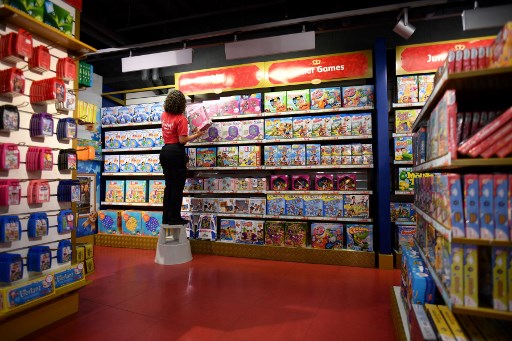
403
Sorry!!
Error! We're sorry, but the page you were looking for doesn't exist.
Retail sales in Eurozone surge for third consecutive month
(MENAFN) Retail sales in the eurozone rose for the third month in a row in September, as reported by Eurostat on Thursday. The month-on-month retail trade volume grew by 0.5 percent within the euro area, though this increase represented a slowdown from the 1.1 percent rise seen in August. The continuing upward trend indicates a resilient consumer market across the region, even as the growth pace moderates slightly. This trend reflects how consumer spending, though still recovering, is encountering some variation based on sector-specific factors.
Breaking down the sales figures, retail volumes for food, drinks, and tobacco declined by 0.4 percent in September, while sales for automotive fuel edged up by 0.2 percent. These differences in sales categories suggest that consumers may be adjusting their spending, possibly prioritizing essential goods while cautiously limiting purchases in areas that are more sensitive to price shifts. This nuanced shift reflects how specific goods and services within the retail sector can show varying performance trends in response to economic conditions.
Annually, retail sales in the euro area marked a growth of 2.9 percent in September, underscoring a positive year-on-year trend in consumer spending. For the European Union as a whole, retail sales also showed gains, with a 0.3 percent monthly rise and a 2.8 percent annual increase. This broader trend within the EU and eurozone highlights that despite inflationary pressures, consumer confidence has supported retail spending, though it continues to vary across member states.
Among individual countries, Belgium, Denmark, and Croatia led with the highest monthly increases in total retail trade volume, each reporting a 2.1 percent rise. Germany followed with a 1.2 percent increase, while Austria and Slovakia both saw gains of 1.1 percent. Conversely, Slovenia experienced the largest decline in monthly retail trade at 2.6 percent, with Poland and Finland also recording drops of 2.0 percent and 1.6 percent, respectively. These disparities reflect unique economic and consumer dynamics within each country, as local economic policies and inflation rates continue to influence retail sales trends across Europe.
Breaking down the sales figures, retail volumes for food, drinks, and tobacco declined by 0.4 percent in September, while sales for automotive fuel edged up by 0.2 percent. These differences in sales categories suggest that consumers may be adjusting their spending, possibly prioritizing essential goods while cautiously limiting purchases in areas that are more sensitive to price shifts. This nuanced shift reflects how specific goods and services within the retail sector can show varying performance trends in response to economic conditions.
Annually, retail sales in the euro area marked a growth of 2.9 percent in September, underscoring a positive year-on-year trend in consumer spending. For the European Union as a whole, retail sales also showed gains, with a 0.3 percent monthly rise and a 2.8 percent annual increase. This broader trend within the EU and eurozone highlights that despite inflationary pressures, consumer confidence has supported retail spending, though it continues to vary across member states.
Among individual countries, Belgium, Denmark, and Croatia led with the highest monthly increases in total retail trade volume, each reporting a 2.1 percent rise. Germany followed with a 1.2 percent increase, while Austria and Slovakia both saw gains of 1.1 percent. Conversely, Slovenia experienced the largest decline in monthly retail trade at 2.6 percent, with Poland and Finland also recording drops of 2.0 percent and 1.6 percent, respectively. These disparities reflect unique economic and consumer dynamics within each country, as local economic policies and inflation rates continue to influence retail sales trends across Europe.

Legal Disclaimer:
MENAFN provides the
information “as is” without warranty of any kind. We do not accept
any responsibility or liability for the accuracy, content, images,
videos, licenses, completeness, legality, or reliability of the information
contained in this article. If you have any complaints or copyright
issues related to this article, kindly contact the provider above.


















Comments
No comment